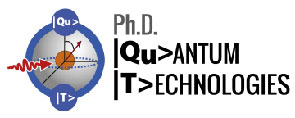Speaker
Description
Atom interferometry utilising single-photon optical transitions represents an emerging technology with the ability to probe physics in a variety of previously untested regimes. Multiple experiments based upon the clock transition of Sr at 698 nm have been proposed to search for a wide set of fundamental physics goals, such as gravitational wave detection. Crucial to meeting these experiments’ required sensitivities is the implementation of large momentum transfer (LMT), with very large enhancements of 1000-10000 ħk ultimately proposed for terrestrial experiments currently in the development stage. In practice, this typically means increasing the momentum separation between the two paths of the wavepacket by applying a series of π pulses. Such a manipulation of the atom samples is highly susceptible to the noise performance of the interferometry laser: within the quantum community-framework of the operational fidelity, we have been simulating the effect of the intensity and frequency noise on a single atom at rest interacting with resonant light. Our results, considering a typical square pulse sequence, show the challenging nature of the proposed experiments, suggesting that the limiting role played by the laser frequency spectrum must be accounted for when studying the practical feasibility of a gravimeter sequence. Particularly, the equivalent laser linewidth is required be considerably lower than has previously been suggested. Within this framework, we further present and analyse two high-power, frequency-stabilised laser sources designed to perform interferometry on the 1S0 -3P0 clock transitions of cadmium and strontium, respectively operating at 332 nm and 698 nm.

